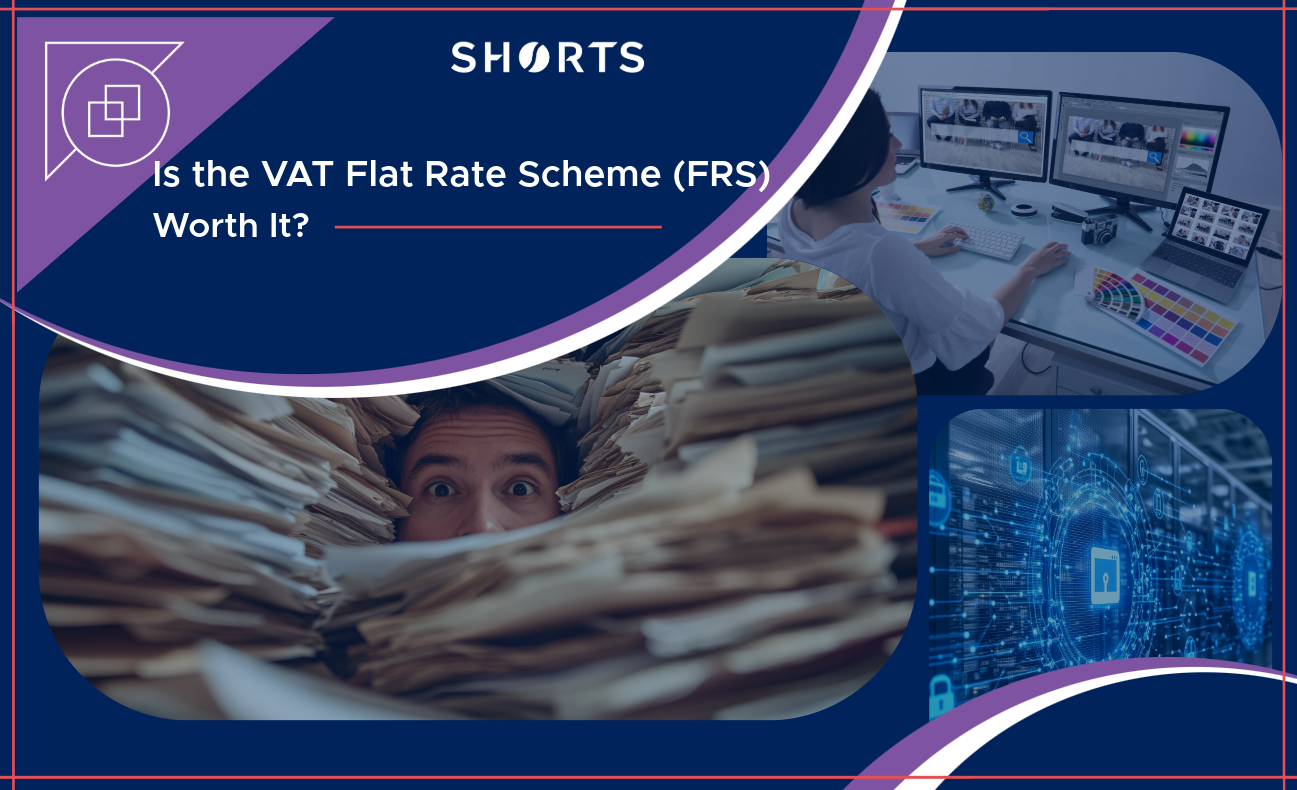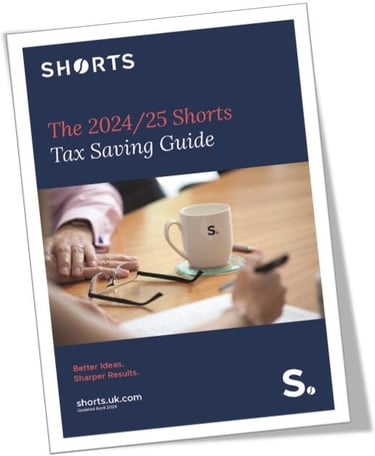
The Flat Rate Scheme (FRS) offers numerous benefits, especially for small businesses looking to simplify their administrative tasks. If your company is growing rapidly, it does have drawbacks. Learn the key benefits and advantages of the flat rate scheme and whether it will help your business below.
How does the Flat Rate Scheme work for small businesses?
The Flat Rate Scheme is an optional, simplified VAT scheme designed for small businesses. Under this scheme, eligible companies apply a fixed percentage — determined by their business sector — to their VAT-inclusive turnover to calculate the VAT payable to HMRC.
The flat rate percentage varies depending on the nature of the business. One key feature of the FRS is that companies do not reclaim input VAT on most purchases. This includes VAT on imports and acquisitions from the EU (for businesses based in Northern Ireland).
However, input VAT can still be reclaimed on certain capital assets costing £2,000 or more (including VAT), provided they are on a single invoice.
The primary aim of the FRS is to reduce the administrative burden on small businesses by simplifying VAT reporting and removing the need to maintain detailed records of input VAT.
Who is eligible to join FRS?
To join and remain in the FRS, your business must meet certain eligibility criteria. You can join the FRS if:
- You are a VAT-registered business
- You expect your VAT-taxable turnover (excluding VAT) to be £150,000 or under in the next 12 months
You cannot join the FRS if:
- You performed a VAT-related offence within the previous 12 months (i.e. VAT evasion)
- You left the Flat Rate Scheme within the past 12 months
- Your company is closely linked to another business (e.g. shared control, financial links, or premises)
- You currently use a margin scheme, Capital Goods Scheme (CGS) or other specialist VAT accounting schemes
- You were a member of a VAT group within the last 24 months
- In the past 24 months, you registered as a business division for VAT
- Currently, you use a cash accounting, retail, or margin VAT scheme
Is joining the Flat Rate Scheme worth it?
In many cases, the benefits of joining the FRS can outweigh the potential drawbacks.
Here are the main pros and cons:
| Pros | Cons |
| Simplified admin | Limited administrative savings |
| Reduced complexity around VAT recovery | Rapidly expanding businesses may exceed threshold |
| Improved cashflow certainty | Issues allocating correct rate |
| Potential financial savings | Potential financial drawbacks |
Advantages of the FRS:
- Simplified administration – VAT returns are often quicker and easier to complete
- Reduced complexity around VAT recovery – Since input VAT is generally not reclaimable, you can avoid the complexities of tracking recoverable VAT
- Improved cashflow certainty – VAT is calculated as a fixed percentage of gross turnover, which can help with your cashflow forecasting
- Potential financial savings – Some businesses benefit financially, especially in the first year of VAT registration, where a 1% discount applies to the flat rate
Disadvantages of the FRS:
- Limited administrative savings – If most of your customers are VAT-registered, the FRS may offer fewer benefits, as clients may expect detailed VAT invoices and you can’t reclaim input VAT.
- Unsuitability for fast-growing businesses – If your turnover grows quickly, you may soon exceed the FRS threshold.
- Difficulty in selecting the correct rate – Determining the correct flat rate percentage can be challenging. Errors may lead to HMRC penalties.
- Potential financial drawbacks – Businesses with a high proportion of international, zero-rated, or VAT-exempt sales may find the FRS less cost-effective, since the flat rate still applies to the gross turnover.
If you decide to join the FRS
If the benefits outweigh the cons for your business circumstances, you can register for the Flat Rate Scheme through three methods:
- Online when registering for VAT
- Online or by post using form VAT600FRS.
- By phone via the VAT helpline
Once HMRC receives your application, you will be notified of the outcome in writing. This usually happens within 30 days. The notice will also confirm the date from which you can start using the scheme.
What happens if my business circumstances change and I become ineligible for the FRS?
Your business must leave the scheme if it becomes ineligible. There are two ways to exit the scheme:
Voluntarily: You may leave the FRS at any time by notifying HMRC in writing.
Compulsorily: You must leave the FRS if you no longer meet the eligibility criteria.
Triggers include:
- Your business no longer qualifies under the FRS rules
- On the anniversary of joining, your VAT-inclusive turnover in the previous 12 months exceeds £230,000, or you expect it to exceed £230,000 in the next 12 months
- You expect total income in the next 30 days alone to exceed £230,000 (VAT-inclusive)
Flat Rate Scheme verdict
If you're a small or newly VAT-registered business with low expenses, then the Flat Rate Scheme could help make VAT administrative tasks more efficient. Businesses that are rapidly growing or have a lots of zero-rated or exempt sales may find themselves ineligible for the FRS.
We always recommend businesses speak with a VAT specialist before making a decision.
Get specialist advice
The Flat Rate Scheme can save a business money and administration burdens. However, it not always as straightforward, and there are many pitfalls to watch out for. Advice should always be sought to confirm the correct use and suitability of the scheme. If you are in any doubt, please contact our VAT team who can advise on your specific circumstances.

Paschal Okonkwo
I work as a tax advisor at Shorts, helping companies and individuals stay tax compliant in the UK.
View my articlesTags: VAT, Business Taxes, Flat Rate Scheme


